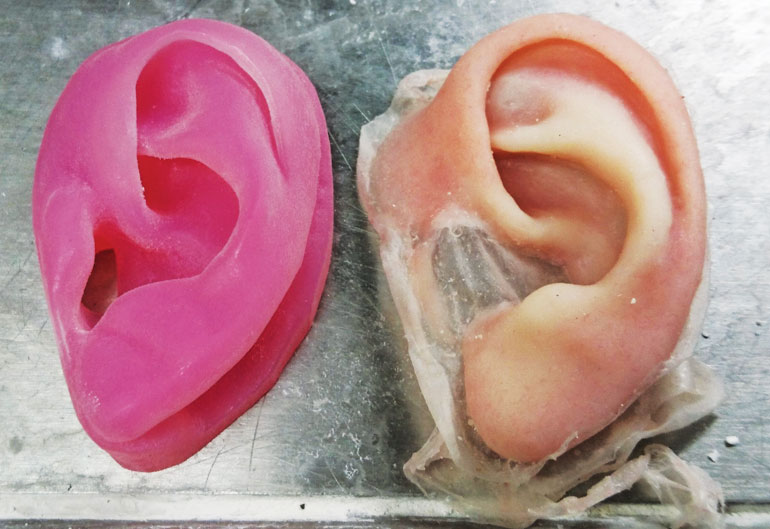3D printing helps one woman get fitted with a new ear after losing it in an accident.
In an Australian first, a woman has been fitted with a new ear created using 3D printing after losing her left ear in a car accident more than 50 years ago.
The ear was fitted by a team that included Deakin University’s Dr Mazher Iqbal Mohammed. The development process for the ear involved several steps, including a CAD-based approach to carry out all the iterations and fine tuning, but Mohammed said it was a relatively straightforward process.
“We didn’t have to physically manufacture anything until the final end point when the model was constructed,” Mohammed said.
The patient had previously been involved in a car accident where she lost her left ear – her right ear was not damaged, with this ear used to help construct the prosthesis.
“We took the patient’s medical imaging data from her CT scan, which was done prior for the implants that were used as part of the fixation of the prosthesis,” Mohammed said.
The team then carried out post-processing using sophisticated design software and directly went to the 3D printing stage using a high-resolution printer and an elastic-like material.
“The purpose for doing it in the elastic material was so we could then use an alginate gel to cast the ear to then form the basis of a wax model, and that then went on to augment the existing practices at the hospital,” Mohammed said.
The team also used a photo curable polymer – a liquid form that hardens when it is exposed to UV light.
“In the process it’s akin to an inkjet printer where you would spray the material down layer-by-layer, and after depositing a single layer, you then have to pass the UV lamp to cure the material,” Mohammed said.
Once the model was cast in the alginate gel, the team was able to preserve the original features they were trying to attain.
The ear clips into place with heavy duty magnets – prior to the initial work, three titanium implants around 1 cm to 2 cm in length were surgically implanted into the patient’s skull at the side of her head. Three high-grade magnets that were placed in the 3D prosthesis, which perfectly aligned with the titanium implants to hold the ear in place.
“They’re strong enough to keep it in place so the person could be active and go about their daily life and routine without any issues whatsoever,” Mohammed said.
The team has been working on this research for around a year, with work such as taking optical scans of different people’s anatomy – including Mohammed’s. They then used the techniques they had refined and within a couple of days, they were able to make the final iteration of the model for the cast.
Making prosthetics using 3D printing is still a relatively new area, with some limitations in what the technology can currently do, such as the materials used in the process and their bio-compatibility.
“But we believe as the technology matures we should be able to have improvements on that front. In fact, some of the work we’ve already done was looking at the direct printing of silicone,” Mohammed said.
Another challenge was adapting the prosthetic’s colour to that of the patient’s skin pigmentation, with the final prosthesis made of seven individual-coloured silicone bases that were amalgamated together.
Following that process, further fine tuning was carried out to match the patient’s skin tone.
The team is also looking at creating an effective grid across each layer of the 3D printing process in a technique known as voxel printing.
“Each of those individual spots on the grid could be allocated with their own material colour combinations, and then using the amalgamation of all of those you can then start to increase the complexity in how the colors look in the final prosthesis,” Mohammed said.
While 3D printing an entire limb is limited due to the size of printers, Mohammed said it could be feasible in the future.
“The possibilities are fairly endless, and with this technology, we will see more of these possibilities becoming a reality,” Mohammed said.
